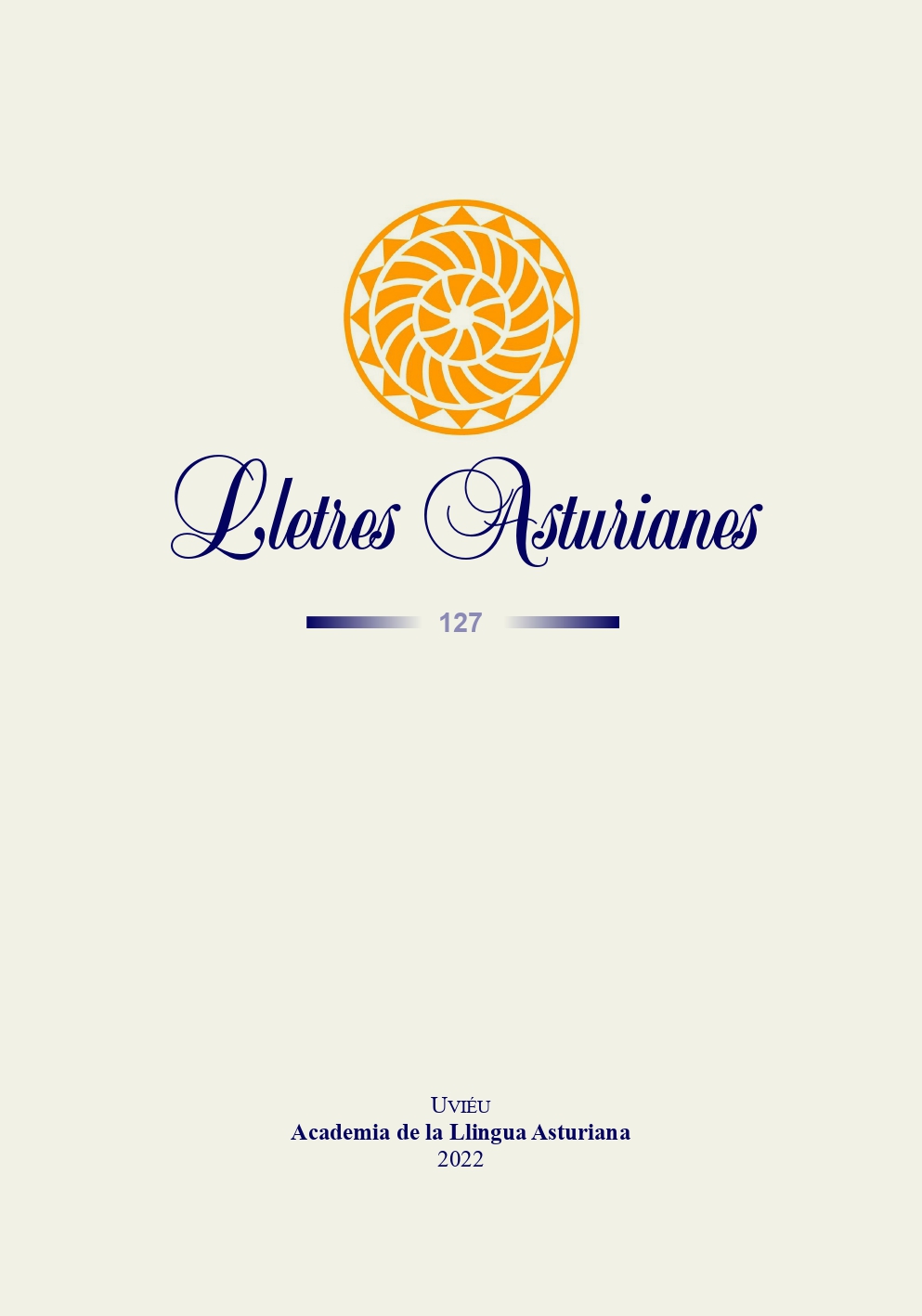Abstract
The analysis of the Portuguese spoken in the border village of Avelanoso, municipality of Vimioso, reveals evident similarities between the Mirandese and the linguistic features of this village. Based on studies on the Mirandese language, especially in Barros Ferreira (2001) about the situation and linguistic delimitation of the Mirandese, and on a qualitative methodological approach based on interviews collected in that village, this work aims to understand at what level the aspects that distinguish the Mirandese from Portuguese can also be registered in the village of Avelanoso. Within the regional varieties of Portuguese, local language is understood as a register that coexists only in spoken form, composed of little differentiated features, but with its changes within the regional structure in which it is inserted; its use is limited to small geographical boundaries (Cunha & Cintra, 2002). This research analyzes the particularities of the local language of this community in the Northeast Trás-os-Montes through the preservation and reconstruction of the memory in the context of oral history (Bosi, 2003). The conclusions of this study reveal that the sociolinguistic peculiarities of Avelanoso are similar or largely coincide with the distinctive features of the Mirandese language. This study argues that Mirandese was once spoken in Avelanoso and that the Portuguese of this village still expresses this sociolinguistic heritage or contiguity, despite all the deep social, economic, and linguistic changes.
In the past, Avelanoso belonged to the administrative territory of Terras de Miranda. Despite this historical connection, there is no record of research focused on this community to analyze the sociolinguistic influence of Mirandese. This study aims to understand the traces of Mirandese in the Portuguese spoken by the people of this village.
References
Alves, A., & Barros, A. (2015). Mirandês, leonês, português e castelhano: glotocídio e conciliação. Conflito e Trauma, (pp.413-434).
Bosi, E. (2003). O tempo vivo da memória: ensaios de psicologia social. São Paulo: Ateliê Editorial.
Calvet, J. L. (2005). Lingüística y colonialismo. Breve tratado de glotofagia. San Diego: Fondo de Cultura Económica.
Ceolín, R. (2002). Um enclave leonês na paisagem unitária da língua portuguesa. Ianua, 3, 62-83.
Cunha, C., & Cintra, L. (2002) [1985]. Nova Gramática do Português Contemporâneo. Lisboa: Edições João Sá da Costa.
Ferreira, A. (2004). La Cidade de Miranda de l Douro i la lhéngua mirandesa. El filandar/O Fiadeiro, XV, 1924.
Ferreira, A. (2010). O mínimo sobre a língua mirandesa. [Estudo publicado na Revista do Festival Intercéltico, Sendim, 2010]. Disponível em: https://studosmirandeses.blogs.sapo.pt/1294.html. Acesso em: 1 dez. 2019
Ferreira, C. (2021, Setembro 26). Planalto Mirandês versus Terras de Miranda [Vídeo]. YouTube. https://www.youtube.com/watch?v=8TrQBunF3ow.
Ferreira, M. B. (1995). O mirandês e as línguas do Noroeste peninsular. Lletres Asturianes, 57, 7-22.
Ferreira, M. B. (2001). A situação actual da língua mirandesa e o problema da delimitação histórica dos dialectos asturo-leoneses em Portugal. Revista de Filologia Românica, 18, 117-136.
Ferreira, S., & Martins, C. (2016). Capital tradutológico e defesa da língua mirandesa. Em Bautista, A., Moutinho, L., & Lídia, R. (coords.), Ecolinguismo e línguas minoritárias: colóquio internacional sobre ecolinguismo e línguas minoritárias: uma homenagem a Amadeu Ferreira (pp. 183-222). Aveiro: UA Editora.
Gil, A. C. (2008). Métodos e técnicas de pesquisa social. São Paulo: Atlas.
Gonçalves, V. (2000). Teatro popular mirandês. Seguido de um inventário dos Cascos representados na Tierra de Miranda. Em Meirinhos, J. F. (coord.), Estudos Mirandeses: Balanços e Orientações. Homenagem a António Maria Mourinho (pp. 151-178). Porto: Granito Editores.
Gouveia, C. (2008). As dimensões da mudança no uso das formas de tratamento em Português Europeu. Em Oliveira, F., & Duarte, I, (orgs.), O fascínio da Linguagem: Actas do Colóquio de Homenagem a Fernanda Irene Fonseca (pp. 91-100). Porto: CLUP/FLUP.
Le Goff, J. (2003). História e Memória. Campinas: Editora Unicamp.
Mateus, M. H. (2003). Gramática da Língua Portuguesa. Lisboa: Editorial Caminho.
Meihy, J. C., & Holanda, F. (2007). História oral: como fazer, como pensar. São Paulo: Editora Contexto.
Meirinhos, L. M. (2014). A evolução da Terra de Miranda: Um estudo com base nos Sistemas de Informação Geográfica [Tese de Mestrado, Universidade do Porto]. Repositório Institucional da Universidade do Porto.
Mourinho, A. M. (1987). A língua mirandesa como vector cultural do Nordeste português. Em Mourinho, A. M (org.), Actas das las Jornadas de Língua e Cultura Mirandesa (pp. 75-87). Miranda de l Douro: Sociedade Gráfica.
Mourinho, A. M. (1993). Breves notas sobre a Língua Mirandesa desde há cem anos. Em Vasconcellos, J. L. (dir.), Estudos de Philologia Mirandesa (pp. 14-21). Miranda do Douro: Câmara Municipal de Miranda de l Douro.
Merlan, A. (2009). El mirandés. Situación sociolingüística de una lengua minoritaria en la zona fronteriza portuguesa-española. Uviéu: Academia de la Llingua Asturiana.
Pires, M. J. (2021). O (o)caso do voseio português do Nordeste Trasmontano. Fórum Linguístico, 18(3), 6706-6716.
Penna, R. (2020). Percursos Historiográficos e fontes orais: elementos para uma discussão. Unimontes Científica, 7(1), 95-106.
Perazzo, P. (2015). Narrativas Orais de Histórias de Vida. Comunicação & Inovação, 16(30), 121-131.
Quarteu, R., & Conde, X. F. (2002). L Mirandés: Ũa Lhéngua Minoritaira an Pertual. Ianua, 2, 89-105.
Santana, M. O. (2007). A Língua Mirandesa. Latitudes, 29, 51-56.
Santos, M. J. (1967). Os falares transfronteiriços de Trás-os-Montes. Separata da Revista Portuguesa de Filologia, XII, XIII e XIV, Coimbra: Instituto de Estudos Românicos.
Sousa, M., & Baptista, C. (2012). Como Fazer Investigação, Dissertações, Teses e Relatórios - Segundo Bolonha. Lisboa: Edições Lidel.
Teyssier, P. (1997). A história da língua portuguesa. Tradução de Celso Cunha. São Paulo: Martins Fontes.
Vasconcellos, J. L. (1900). Estudos de Philologia Mirandesa. vol. 1. Lisboa: Imprensa Nacional.
Vasconcellos, J. L. (1901). Estudos de Philologia Mirandesa. vol. 2. Lisboa: Imprensa Nacional.
Vigón, S. (2000). El mirandés nel cuadru de les llingües peninsulares. Em Meirinhos, J. F. (coord.), Estudos Mirandeses: Balanços e Orientações. Homenagem a António Maria Mourinho (pp. 77-83). Porto: Granito Editores.


